Services

Resurfacing Almond Acid
Resurfacing Almond Acid
.jpg)
Application Features
Mandelic acid falls under the first generation of AHA, with the molecular weight of 152.14. Due to its chemical structure similar to antibiotics, it has a good antibacterial effect on E. coli, streptococci, and anaerobic bacteria.
It is currently the only lipophilic AHA with high skin affinity. It can easily penetrate the stratum corneum, playing a role deep in the skin. Targeting oily skin and acne-prone skin, it can achieve good results in improving antibacterial and pore blocking. It also has a significant therapeutic effect on photoaging, especially due to excessive pigmentation.
Almond acid is the only lipophilic AHA with a benzene ring. It is said to be the mildest AHA. It not only effectively inhibits the two elements of the “pigment manufacturing plant”, namely, “tyrosinase” and “tyrosine”, but also more effectively blocks melanin formation than any other resurfacing components. Its mild and non-irritating properties make it suitable for all skin types, without the side effects of regular resurfacing AHA, such as redness, swelling, burns, and scarring.
♦Efficacy.jpg)
According to experimental results in medical literatures, almond acid used as a resurfacing material can effectively solve the problem of pimples, especially the accompanying symptoms such as inflammatory pustules and papules that can be significantly improved after almond acid use. Almond acid also shows good results for skin problems such as relaxation, wrinkling and photoaging. Worth noting is that almond acid produces significant therapeutic results for uneven skin tone, dullness, dark spots, freckles, post-inflammatory pigmentation, and so on, which cannot be achieved by other AHA. Clinical results have also shown that six months after continuous almond acid product use, some patients’ color spots were completely eliminated, thus indicating its effectiveness in lightening melanin. Additionally, for patients who developed post-inflammatory pigmentation following therapeutic treatment, no overproduction of pigments was seen after almond acid use.
♦Suitable Targets.jpg)
1.Pigmentation problems: uneven pigmentation, spot lightening, post-inflammatory pigmentation lightening.
2.Those with dull skin, ununiformed brownish yellow skin, with a need to improve skin brightness.
3.Firmness problems: It stimulates collagen and elastin regeneration, improves fine lines and large pores, and enhances skin elastic and firmness.
4.Those who need to reduce pores and remove white heads/black heads.
5.Those who need to reduce oiliness and improve inflammatory pustules.
6.It promotes keratinocyte metabolism and refines the skin.
7.It is used in laser postoperative care and can prevent pigmentation.
♦Treatment Time and Interval.jpg)
The therapy time differs with the scope of therapy. Each therapeutic session (preoperative and postoperative) is about 40-60 minutes. In general the therapy is performed once every 2-3 weeks, about 5-6 sessions in total.
However, the surgeon’s recommendation will be based on the skin condition of individuals after an evaluation.
Treatment Process
Clinic consultation with surgeon(including photography)→cleansing→Resurfacing almond acid therapy conduction→white heads/black heads cleaning→importation of postoperative calming moisturization→repair and facial mask application→skincare and sunscreen.
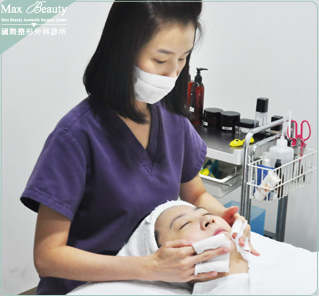 |
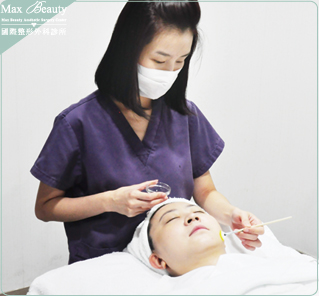 |
.jpg) |
|---|---|---|
| Cleansing | Resurfacing almond acid therapy conduction | White heads/black heads cleaning |
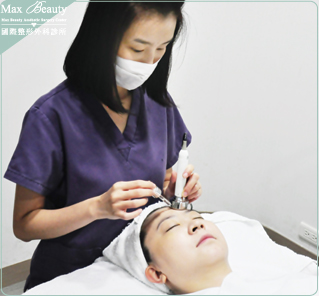 |
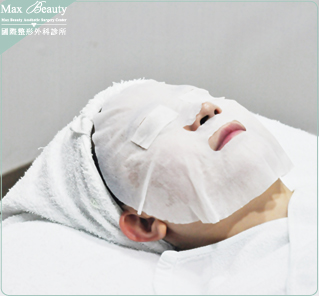 |
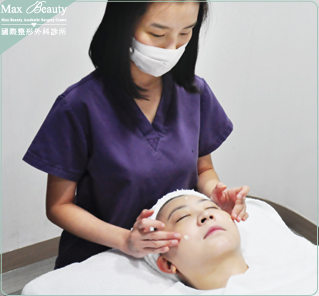 |
|---|---|---|
| Importation of postoperative calming moisturizing | Repair facial mask application | Skincare product and sunscreen application |
Precautions
| 1.Strengthen moisturizing and repair and sunscreen. Avoid direct sun exposure and reduce outdoor activity. |
| 2.Do not perform exfoliation before surgery and one week after surgery. Do not apply whitening products (LC. Arbutin, etc.), acid products (A acid, AHA, salicylic acid, etc.), and skincare products containing irritating ingredients (alcoholic ingredients). |
| 3. Avoid heat stimulus two weeks after surgery, such as sauna, oven, stem room, hot spring, face washing using hot water, etc. |
| 4.In case of local frost, slight itching will be experienced. This is a normal phenomenon in epidermal renewal. Do not scratch to avoid external stripping. Wait for the skin to heal itself for natural peeling to take place. Please strengthen moisturizing and sunscreen during this period. |
| 5.Do nose use skincare products or drugs not prescribed by the doctor during treatment period. |
| 6.Avoid a facial or facial care, exfoliating cream, hair perm/dye, A acid products, or sun overexposure one week before resurfacing. On the day of resurfacing, men are advised not to shave. |
| ◆Contraindication◆Please consult the surgeon before undergoing treatment. |
| 1.Women that are pregnant or are planning pregnancy. |
| 2.Those who apply acids or whitening products before surgery. |
| 3.There is a viral infection at the treatment site. |
| 4.Those with allergic skin, light-sensitive skin or taking light-sensitive drugs (such as A acid). |
| 5.Those with skin lesions or immune system anomalies (such as Lupus erythematosus). |
Q&A
Q:Is it true the higher the resurfacing almond acid concentration the better?
A:Almond acid generally comes in three concentrations: 10%, 20%, and 30%. However, high concentrations of almond acid are not suitable for everyone, neither is “the higher the better”. It is strongly recommended that you consult a professional dermatologist for advice on the safest and most suitable concentration you need after diagnosis and base on your skin condition.
Q:Shall I choose resurfacing almond acid or laser phototherapy?
A:For common acne problems, it is suggested that resurfacing AHA be used to facilitate normal cuticle metabolism, improve white heads/black heads, inflammatory acne, dullness, and uneven skin tone. Laser phototherapy may be complemented to improve acne scar and achieve more tender and whiter skin.
Q:What is the difference between resurfacing almond acid and resurfacing AHA?
A:First, the molecules of mandelic acid are much larger than those of AHA. Therefore, their penetration into the corneum stratum will be at a much slower rate, thus the relative mildness in terms of stimulation. Moreover, almond acid is neutralized by way of using warm water, unlike traditional AHA that requires the use of a neutralizer. This will avoid discomfort arising from the “extreme acidity” and “extreme alkalinity”. After surfacing almond aid surgery, there is minimum peeling, without redness, swelling, or large areas of peel offs. Hence, postoperative care is much simpler, and pigmentation is less likely. The action of AHA is to dissolve the dead cells of the skin, promote skin metabolism, and stimulate basal skin regeneration. Therefore, effective improvement can be achieved, whether for white heads/black heads, acne, pigmentation and spots, large pores, coarse skin, or dullness and sallowness. On the other hand, in addition to the effects traditional AHA produces on the skin, almond acid can also achieve skin repair and reduce allergic reactions. As AHA is less irritating with quick and efficient results, it is generally accepted by everyone.